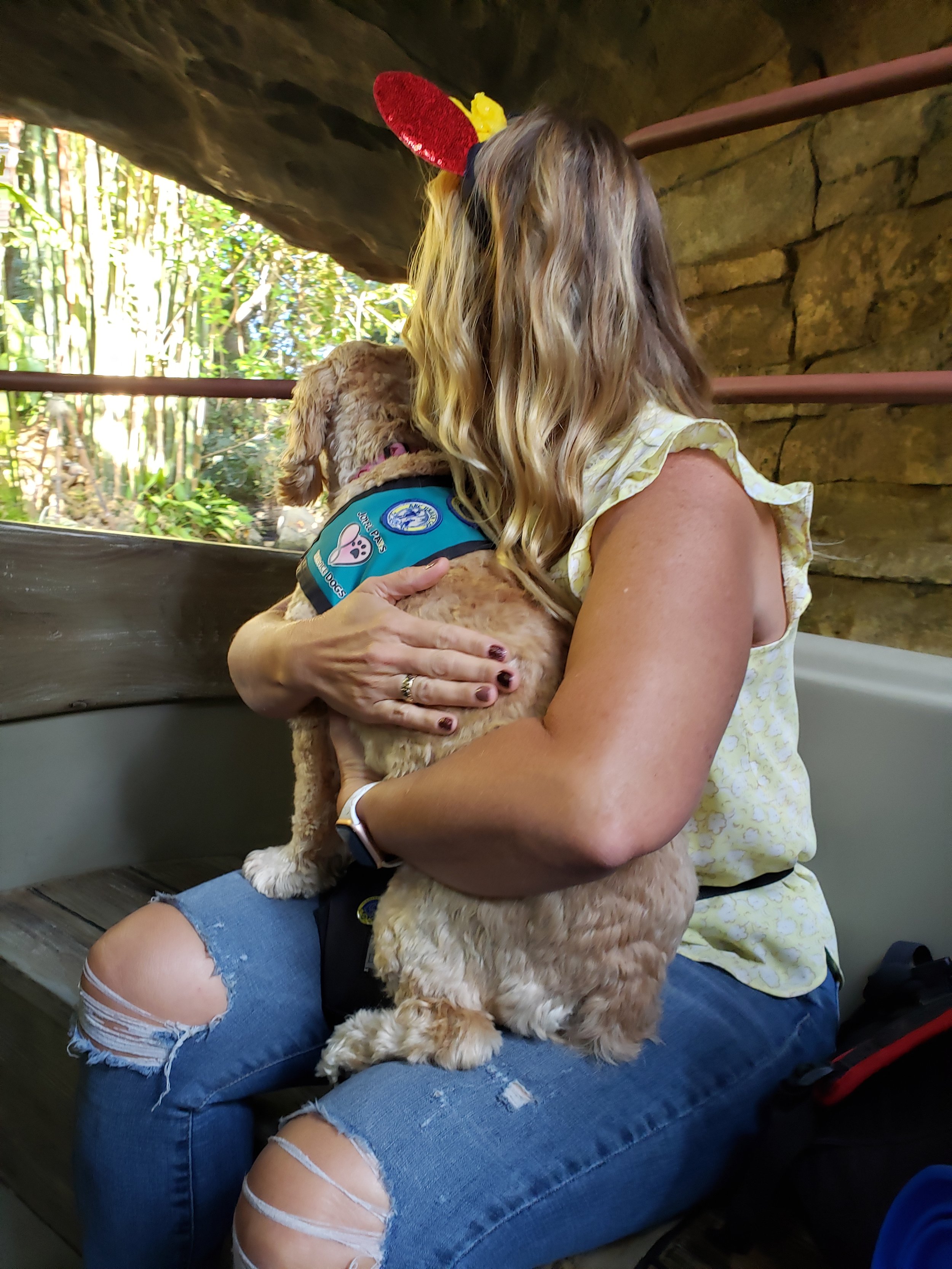Service dog Types and skills
We here at Joyful Paws Service Dogs recognize that there is a “gap” in the service dog production industry. There are many programs that fully train and place service dogs for a variety of disabilities — but there are three primary populations that are underserved in the service dog market. Because it can be so difficult to find a program that fits these three disability types, JPSD has put a special focus to fulfill a very big need in these communities. While we accept all people with all types of disabilities, these three types of service dogs and the tasks associated are our primary focus.
chronic illnesses
Every individual’s chronic illness can look a little different — so many programs who have a “mold” of dogs they produce have trouble meeting a client’s individual needs. A well-trained service dog for chronic illnesses helps “buy time” between debilitating symptoms. If a person gets chronically fatigued, having a dog who can tell them to stop before they even get tired can be the difference between being exhausted after one hour, versus being productive all day (with breaks strategically timed and managed by your furry medical monitor).
Some tasks that these dogs can be trained to perform:
Deep pressure or tactile therapy to combat blood pooling in legs and reduce heart rate and blood pressure
Cardiac alert — to changes in heart rate and blood pressure allows handler time to rest and recover before symptoms become problematic
Retrieves to prevent frequent bending and minimize movement needed
Guiding or finding a specific location (exit, chair, human helper) to combat disorientation, brain fog or temporary loss of vision
“Get help” cue — to find a human helper or dial 911 in case of emergency
Emergency communication — Bring an information card to passers by to communicate what needs to be done in the event of a collapse, then staying with and performing deep pressure therapy on handler until they recover
Autistic/Neurodivergent adults
While there are many service dog programs aimed toward autistic children and their families, autistic adults rarely get the attention and support they need. There are a myriad of things a service dog can do to increase the independence and personal fulfillment of an autistic person, and my goal is to provide the information and support needed to train your own autism support service dog — and to offer that information in a way that is accessible to a neurodivergent brain. I have personally seen many service dogs be the difference that allows a person to live an independent and fulfilling life.
Some tasks that are frequently helpful for neurodivergent adults include:
Sensory deprivation tasks — guiding and hearing alerts when a person needs to “turn off” one or more of their senses
Deep pressure, tactile therapy and sensory grounding to combat overstimulation
Crowd control — blocking or circling to communicate to others that the handler needs extra space
Self-harm or repetitive behavior disruption and redirection
Finding specific locations (chair, quiet place, exit) to combat disorientation
Communication aid for non-verbal or catatonic episodes
Executive function support — bringing medication at scheduled times, watching to ensure handler takes medication, walking handler through daily routine and being persistent until handler finishes those routines, disruption from repetitive or obsessive behavior
civilians with psychiatric disabilities
There are many programs who provide service dogs for our service members who suffer severe PTSD symptoms following their service to our country. While this is important and I am very glad there are many options for our veterans, it does leave the other 96% of people who suffer with PTSD without as many options. My goal is to provide the same level of support to those who are recovering from trauma from non-combat related crimes and experiences. These tasks often also benefit people with other types of psychiatric disabilities, such as schizophrenia, personality disorders and chronic anxiety disorders.
Some tasks that are frequently helpful for those with psychiatric disabilities include:
Panic attack alert and response — calls attention to behavioral symptoms or chemical changes that precede a panic attack, and help take steps to mitigate or prevent the attack from occuring
Deep pressure, tactile therapy and sensory grounding
Emergency medication retrieval, or scheduled retrievals to combat executive dysfunction
Alert to people approaching from behind, blocking and “watch my 6” to combat hyper-vigilance
Reality checks for visual or auditory hallucinations or delusions
Behavior interruption — picking skin, self harm, repetitive and problematic behaviors



